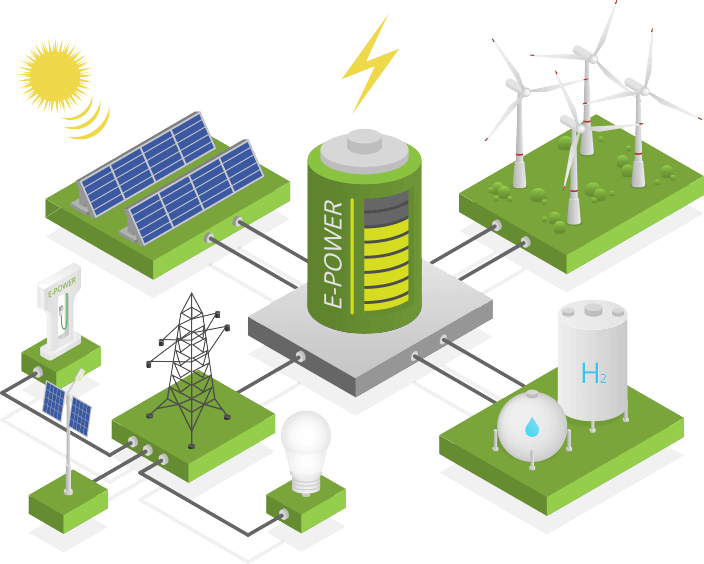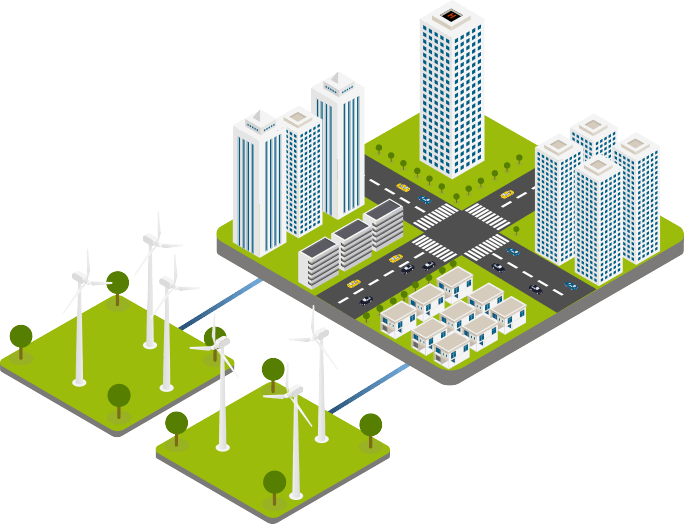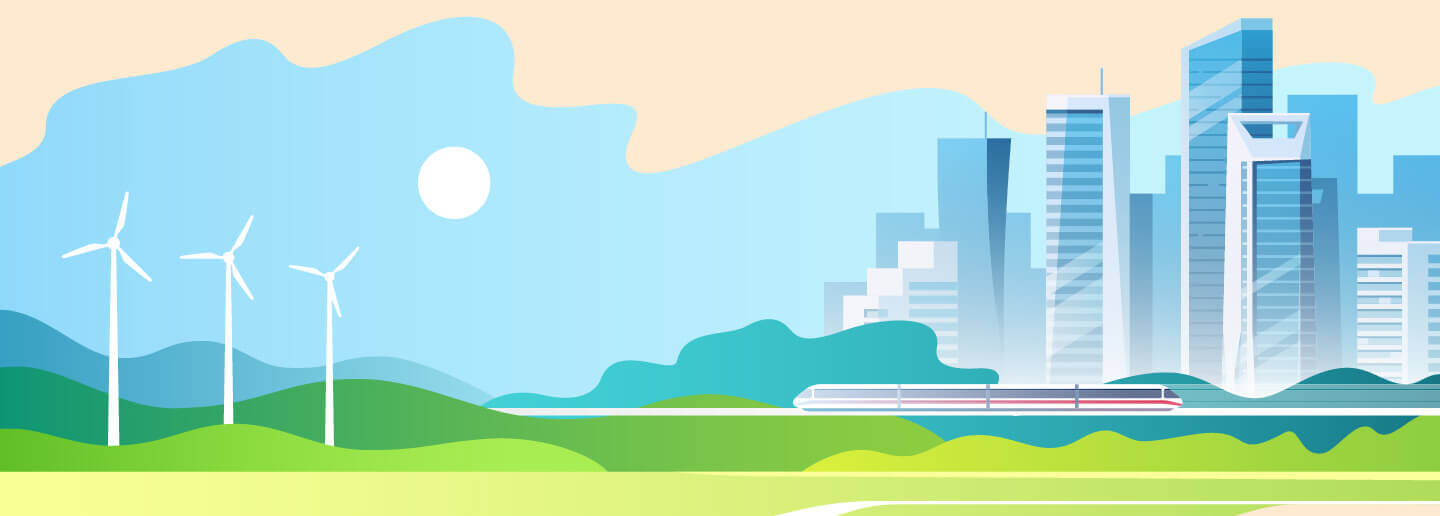
Toray and the
hydrogen future
Much has been discussed about the potential of hydrogen to help the world become less reliant on fossil fuels and transition towards a net-zero emissions economy. Yet until recently, realising its potential has been highly challenging. However, change is in the air.
This year could prove to be an inflection point in the world’s efforts to mitigate climate change. The COP26 climate action meeting in Britain, and a recent Intergovernmental Panel on Climate Change (IPPC) report both underscore the urgent need for governments and private sector players around the world to take drastic climate action. The IPPC warns how the world’s carbon dioxide (CO2) concentration is at its highest in two million years. Sea levels are rising at their fastest levels in at least 3,000 years, and Arctic sea ice is at its lowest levels in 1,000 years. According to the World Meteorological Organization, the world’s 20 warmest years recorded have all occurred between 1996 and 2018.

A number of governments have reaffirmed their commitments to becoming carbon neutral. Japan’s Prime Minister Yoshihide Suga says the nation will slash CO2 emissions to zero within three decades. American President Joe Biden has similarly announced a host of measures designed to realise net-zero emissions by the same date
While global warming is a colossal challenge in its own right, it is interconnected with the pressing global issue of resource depletion. Combined they pose an existential threat to humans and biodiversity on Earth. As a result of climate change, more than one million species face extinction. Meanwhile, resource extraction has more than tripled since 1970, with a five-fold increase in the use of non-metallic minerals, and a 45% increase in fossil fuel usage. Between 2015 and 2060, industrial water withdrawal will increase by 100% compared to 2010.
Fortunately, viable solutions to the challenges of climate change and resource depletion exist in the form of zero-carbon energy and the circular economy. Hydrogen plays a key role in realising both.
Hydrogen’s potential, Toray’s vision
The potential of hydrogen in mitigating climate change is enormous. ‘Green hydrogen’, made through the electrolysis of water using zero-emission power sources such as solar and wind power, releases zero CO2 into the atmosphere during the production and consumption of electricity and heat energy. As a fuel it is highly versatile, and can power all types of transport, from cars and lorries, to trains, ships and aeroplanes. Hydrogen can also power industrial plants and offices of all shapes and sizes: it supports the storage of energy derived from wind and solar power, and can be transported over vast distances via pipelines and transportation.

The gas also has the potential to play a key role in realising the circular economy. For example, hydrogen can be applied to chemical and CO2 recycling, helping break down hazardous gases and materials, as well as recreating methane, an important ingredient in fertilizers. Furthermore, when hydrogen is converted into energy its only biproduct is water, which too can be reused.
Toray technology is pioneering a new chapter for green hydrogen. Across the hydrogen value chain—spanning production, transportation, storage and use—the company’s many solutions are setting industry standards. One such technology that is expected to become the benchmark in its field is Toray’s hydrocarbon-based electrolyte membrane, a key material in the field of water electrolysis and green hydrogen production, which creates twice as much of hydrogen gas per unit area than rival solutions. This greatly increases production efficiency while significantly reducing costs.
In order to realise a carbon-neutral society, radical innovations must be realised on a daily basis by 2050,” says Mr Yukichi Deguchi, Executive Advisor, Corporate Strategic Planning Division, Toray Industries. “This means that it will be necessary to mobilise the wisdom of humanity to take on the challenge of solving extremely difficult problems, in terms of both technology and also social mechanisms.
“Through its research and development, as well as business activities, Toray will continue to take on the challenge of providing innovative solutions that contribute to the realisation of a carbon-neutral society, while at the same time striving to reduce greenhouse gas emissions from our business activities to net-zero.”

A partnership of public and private sectors

To unleash the full potential of the hydrogen economy, governments need the support of private companies. While there are many highly competent governmental institutions and independent initiatives leading the way, without private sector participation the development of solutions and their widespread deployment could stall.
“In order to achieve carbon neutrality, it is essential that companies do not just work on an individual basis, but collaborate with industry, government and academia in order to build a social infrastructure and promote initiatives,” explains Mr Deguchi. “By learning from our partner companies around the world and conducting product development together, we are able to meet the needs of society. This kind of creative collaboration—which we call co-creation—is a characteristic of Toray as a materials manufacturer.” Collaboration is equally as important for Toray’s work culture. The company’s mantra of providing meaningful work and fair opportunities ensures an emphasis on developing human capital through various developmental programmes, and work environments where talent and a vibrant corporate culture flourishes.
One of Toray’s key visions is what it calls the “hydrogen society”, where the gas is used to power and heat businesses, industry and homes by means of scalable infrastructure. Exemplifying the potential of partnerships towards this goal, the Yamanashi P2G Demonstration Project brings together eight partners, including TEPCO and Yamanashi Prefecture, dedicated to the development of large-scale green hydrogen production across the entire value chain.
The vision shared by the participants in this project is to use electricity generated by renewable energy sources to produce green hydrogen from water electrolysis, and to use the resulting green hydrogen as a transport medium for energy,” says Mr Deguchi. “This includes converting it back into electricity at the point of demand. Or to use it for heat, transport fuels and industrial applications through the concept of ‘sector coupling’.” Notably, sector coupling, the seamless integration of power and fuel producers with energy consumers, has the potential to lower CO2 emissions by 60% by 2050.
Transforming livelihoods
Aside from helping mitigate climate change and resource depletion, hydrogen can benefit society in many other ways. Not only will it lead to less air pollution and healthier cities and towns, but it could provide greater energy security by virtue of its ability to store renewable power. Hydrogen can also assist with food security, producing a constant flow of energy for farmers and food manufacturers.

Toray’s leading materials address critical societal needs too. Boeing’s 787 aircraft use the company’s carbon fibre composite materials as primary structural materials, making the aeroplanes lighter and 20% more fuel efficient, allowing for 30% larger windows, and enabling cabins to be quieter with comfortable humidity. Likewise, Toray’s synthetic fibre features in Uniqlo’s HEATTECH, the global retailer’s pioneering winter range of ultra-thin yet extra-warm items.
When assessing the potential of hydrogen to counter climate change and resource depletion, two factors can make the gas viable in the near-term: cost of production, and availability of infrastructure. Toray is leading the charge in both areas. “Toray has always been based on the principle of service to society, and we are convinced that materials have the power to change lives,” enthuses Mr Deguchi. “We recognise that solving global environmental problems, including climate change and ensuring a safe and hygienic living environment, will be the greatest social challenges in the decades to come.”

